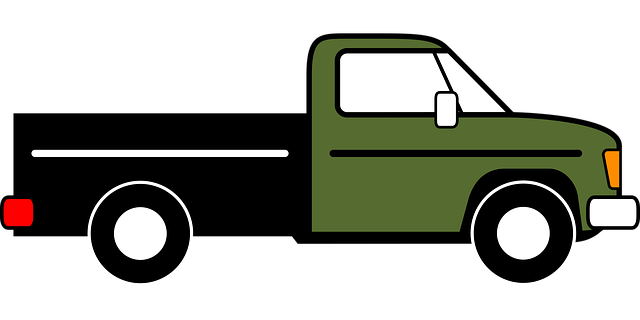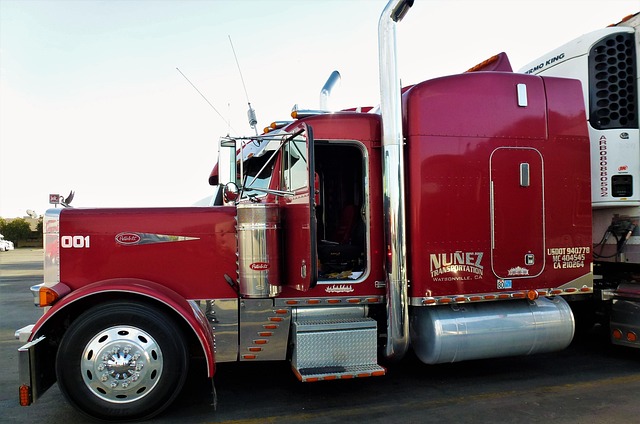Looking to register your car in California? This comprehensive guide walks you through every step, from understanding key requirements to completing the registration process efficiently. We emphasize the importance of vin verification, ensuring you have all necessary documents for a smooth experience. Learn how to perform a VIN check, whether online or at a DMV office, and finally, discover how to pay fees and obtain your new California license plate.
- Understand California Car Registration Requirements
- Gather Necessary Documents for Vin Verification
- Perform Vehicle Identification Number (VIN) Check
- Complete Online Registration or Visit DMV Office
- Pay Registration Fees and Receive Your Plate
Understand California Car Registration Requirements

Before registering your car in California, it’s crucial to understand the state’s specific requirements for vehicle identification number (VIN) verification. The Golden State has stringent regulations to ensure the integrity and security of its vehicles on the road. One key aspect is ensuring the VIN on all documents matches the one inscribed on the vehicle’s frame or engine. This process, often facilitated through a vin inspection or mobile vin verification, checks for any discrepancies that could indicate odometer rollback or fraudulent activities.
California Department of Motor Vehicles (DMV) services require you to present valid documentation, including proof of identity and ownership, when registering your car. Additionally, the state mandates that all vehicles meet certain safety standards and emissions regulations. By undergoing a thorough mobile vin inspection, you can streamline the registration process, ensuring your vehicle is up to code from the get-go.
Gather Necessary Documents for Vin Verification

To initiate the car registration process in California, you’ll need to gather several crucial documents for VIN (Vehicle Identification Number) verification. This step is essential to ensure the vehicle’s authenticity and ownership history. Firstly, obtain your vehicle’s registration certificate from a previous state, if applicable. It’s also necessary to have the title document on hand, which proves legal ownership of the car.
Additionally, you’ll require a valid driver’s license or state-issued ID card, proof of insurance, and a current emissions test (if applicable). For convenience, many individuals opt for a mobile VIN inspection or engage a vin inspector to assist with this documentation process, ensuring a smoother transition during registration.
Perform Vehicle Identification Number (VIN) Check

Before you begin the registration process, it’s crucial to perform a Vehicle Identification Number (VIN) check. This step is essential as it verifies the vehicle’s history and ensures that it meets all legal requirements. A mobile VIN verifier or inspector can facilitate this process by providing on-site vin inspection services, which are particularly convenient for California residents looking to register their cars efficiently.
By utilizing a mobile vin inspection tool, you can quickly ascertain vital information about your vehicle. This includes its make, model, year, and even previous owners. Such detailed insights play a significant role in the registration procedure, as they help officials cross-reference data to prevent fraud and ensure the accuracy of the documentation.
Complete Online Registration or Visit DMV Office

You have two options for registering your car in California: complete the process online or visit a DMV office in person. Both methods require accurate and up-to-date information, including your vehicle’s unique Vehicle Identification Number (VIN) for verification purposes. A mobile VIN verifier or inspector can assist with this step by quickly and accurately retrieving detailed vehicle history information based on your VIN.
When opting for online registration, ensure you have all necessary documents ready, such as proof of ownership, identification, and insurance. The California DMV website provides a comprehensive guide to the process and allows you to submit applications and pay fees digitally. Alternatively, visiting a DMV office involves filling out forms, presenting required documents, and paying the registration fee. A vin inspection is typically conducted during this visit to confirm vehicle details and ensure compliance with state regulations.
Pay Registration Fees and Receive Your Plate

After completing the registration process and providing all necessary documentation, the next step is to pay the registration fees. These fees vary based on several factors, including your vehicle’s type, age, and emission standards. You can typically pay online or at a local DMV office using a debit or credit card. Once your payment is processed, you will receive your California license plate.
Ensure that you have your Vehicle Identification Number (VIN) verified for accuracy before proceeding. Some services offer mobile VIN verification and inspection options, allowing for added convenience. These mobile VIN verifiers can check the vehicle’s history and ensure it meets California’s requirements, providing peace of mind during your registration process.
Registering a car in California involves understanding key requirements, gathering essential documents for VIN verification, conducting a vehicle identification number (VIN) check, completing online registration or visiting a DMV office, and paying necessary fees. By adhering to these steps and ensuring accurate VIN verification, you can smoothly navigate the process and hit the roads legally in no time.



